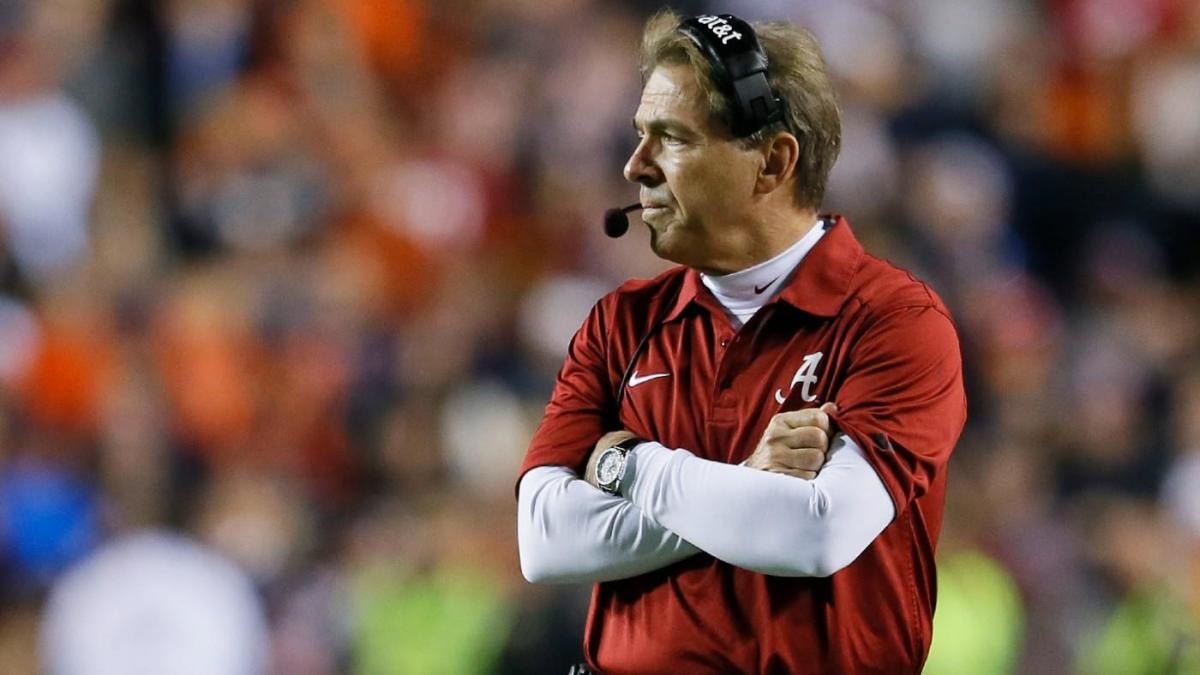Greg Sankey puffs chest touting SEC's strength as 'super league' dynamic reshapes college football
The article takes a look at how SEC Sankey views the current landscape.:
Sankey still wants to influence the selection of playoff teams. No auto bid increases the chances of more SEC schools.
Sankey and the league president seem to focus on the NIL (Alston v. the NCAA). The SEC has put together a strategy to take advantage of this opportunity. The responsibility lies with the conference and the NCAA. I get the impression the SEC isn't controlling each school's NIL setup but has given them guidance on how to work the system in their favor.
The video in the upper righthand corner goes into deep dive with Sankey on various topics, such as staying 16 teams to the B1G expansion cutting into his vacation, etc.:
3:50 mark of the video: Sankey discusses the idea of staying at 16 for now. Some of its concerns deal with the GOR of teams they are interested in, such as Clemson and Fla. State. ESPN controls both leagues, so ESPN has a vested interest in not losing money in either league. Sankey is thinking of staying regional (Southeast) because that's what the league identifies as, but the league wants national appeal. You can't have it both ways. If the B1G had stayed regional, no USC & UCLA, then the possibility exists.
5:53 mark: The size of the conference does impact the reason the conference exists in the first place. Sankey gave an example of going beyond 16 presents scheduling issues that affect traditions/rivals. The SEC struggle with Kentucky may go 12 years between visits to College Station (A&M), and the same for Arkansas to Florida. Expansion beyond 16 can be done, but the league begins to lose its identity. Imagine Ohio State and Michigan playing every few years instead of yearly. That could cause the league to break up. Bigger isn't always better because you can kill the golden goose.
7:55 mark: The recent move by the B1G caught everyone by surprise, including the SEC/Sankey. Sankey was preparing to go on vacation when the news broke. Sankey canceled a vacation to spend the weekend taking calls about the current events. Although Sankey didn't dive into details, the SEC is concerned in a big way.
The article takes a look at how SEC Sankey views the current landscape.:
Sankey still wants to influence the selection of playoff teams. No auto bid increases the chances of more SEC schools.
That's the silk scarf in the commissioner. His message: Don't try us. For the moment, Sankey has tacitly removed the SEC's support of a 12-team playoff that includes six spots reserved for the top-ranked conference champions.
"I'd be fine with no [automatic qualifiers]," he said.
Sankey and the league president seem to focus on the NIL (Alston v. the NCAA). The SEC has put together a strategy to take advantage of this opportunity. The responsibility lies with the conference and the NCAA. I get the impression the SEC isn't controlling each school's NIL setup but has given them guidance on how to work the system in their favor.
A month before that revelation, Sankey had already told his league presidents it would be "the most consequential year in the history of college sports." Consider what has happened since: Alston v. NCAA decision; name, image and likeness rights; and the NCAA deciding to rewrite its constitution while ceding responsibilities to the membership power brokers like Sankey.
The video in the upper righthand corner goes into deep dive with Sankey on various topics, such as staying 16 teams to the B1G expansion cutting into his vacation, etc.:
3:50 mark of the video: Sankey discusses the idea of staying at 16 for now. Some of its concerns deal with the GOR of teams they are interested in, such as Clemson and Fla. State. ESPN controls both leagues, so ESPN has a vested interest in not losing money in either league. Sankey is thinking of staying regional (Southeast) because that's what the league identifies as, but the league wants national appeal. You can't have it both ways. If the B1G had stayed regional, no USC & UCLA, then the possibility exists.
5:53 mark: The size of the conference does impact the reason the conference exists in the first place. Sankey gave an example of going beyond 16 presents scheduling issues that affect traditions/rivals. The SEC struggle with Kentucky may go 12 years between visits to College Station (A&M), and the same for Arkansas to Florida. Expansion beyond 16 can be done, but the league begins to lose its identity. Imagine Ohio State and Michigan playing every few years instead of yearly. That could cause the league to break up. Bigger isn't always better because you can kill the golden goose.
7:55 mark: The recent move by the B1G caught everyone by surprise, including the SEC/Sankey. Sankey was preparing to go on vacation when the news broke. Sankey canceled a vacation to spend the weekend taking calls about the current events. Although Sankey didn't dive into details, the SEC is concerned in a big way.


